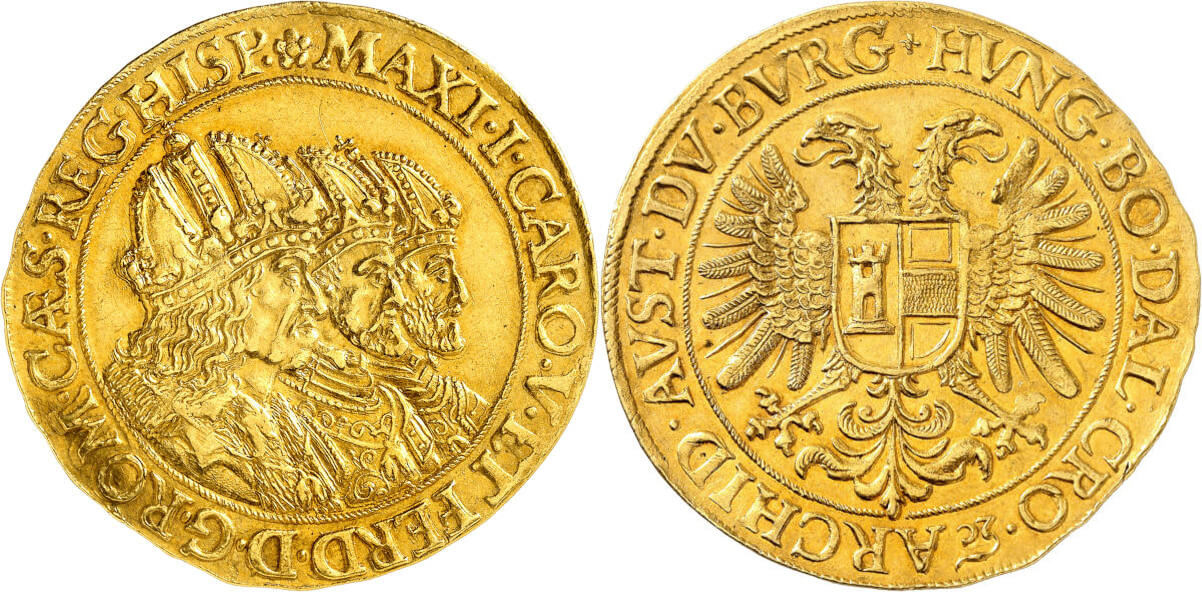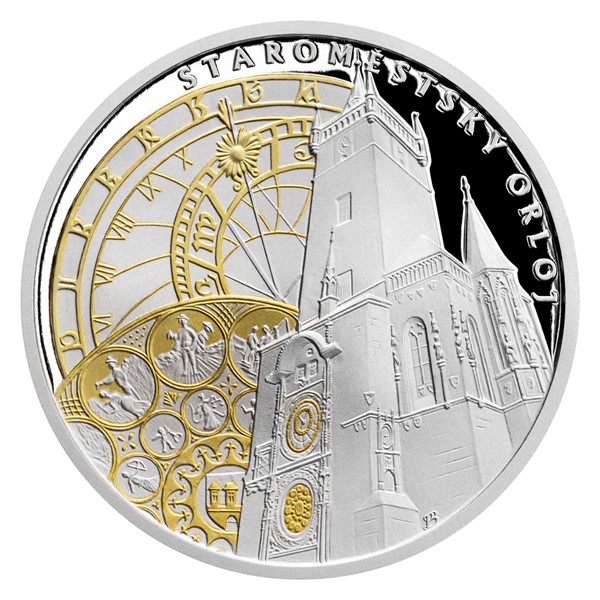This involves scanning a plaster maquette to create a 3D digital representation of gold medals or coins. The equipment used is specially designed to record the specifics and dimensions of the model in digital format. This digital replica serves multiple reasons during the manufacturing process.
3D Scanning - High-resolution scanners capture physical dimensions and detail of the plaster model. These scanners use various methods like laser scanning or structured light, to take precise measurements and geometrical details.
Surface Information Capture - The scanner projectes light or laser beams onto the model's surface. The scanner records any reflections or distortions created by these laser beams, and can record the surface details of the plaster model.
Data Collection- As it moves along the surface of the models made of plaster the scanner collects a large number of data points. These data points are used to build an electronic model of the model including its geometry, contours details, and contours.
Conversion into 3D Model. Specialized software converts the data into a 3D model. The model is a representation of the physical and dimension of the maquette made of plaster.
The Motives for Creating a Digital 3D Model
Digital 3D models can be used to recreate the exact dimensions and details of a real model. This precision is crucial in order to ensure that the gold medals or coins are in line with the original design.
Making it easier to modify modelsDigital models are easily modified or refined. Designers can adjust the 3D model without altering the original plaster maquette. This allows for iterative adjustments or enhancements.
Compatibleness of Digital 3D Models with Manufacturing Processes. Digital 3D model are compatible with different manufacturing techniques, such as CNC machining.
Digital 3D Models serve as a reference for the design. You can save them digitally for reference in future reference, to make reproductions, or for preserving the history of the design.
Designers and manufacturers can employ advanced manufacturing techniques to create gold coins and medals that are precise and true to the original design by scanning models of plaster and generating digital 3D models. View the top rated Scanning and 3D Modeling Prague Mint gold medals more tips. including gold silver bullion, gold sovereign coins, american buffalo coin, congressional gold medal, gold bullion, gold and silver coins, 1oz gold, gold quarter, 2000 p gold dollar, $20 gold piece and more.

Why Are Dies For Gold Medals And Coins Made To Be Vacuum-Hardened?
The process of forming dies that are that are used to make gold medals and coins is done by subjecting them to extremely high temperatures under controlled conditions in a chamber. Here's a brief overview of the procedure for die preparation and Cleaning-
It is crucial that the dies used to strike medals and coins are completely free of any dirt and other contaminants.
Loading into Vacuum Furnace-
Die dies can be inserted in a vacuum oven that creates a vacuum within the heat-treating area.
Evacuation from the Air
The vacuum furnace draws air from the chamber, resulting in the perfect vacuum, free of oxygen and other gases. This helps to prevent the oxidation process while also ensuring a an even heating.
Heating Phase
The furnace is then heated to the desired temperature to harden the dies. The temperature range is based on the particular material and the processing for hardening.
Soaking at high temperatures-
The material can achieve the desired hardness, and the metallurgical structure is created.
Quenching (or cooling)
The dies will be quenched or rapidly cooled after soak. This fast cooling process aids in locking the desired hardness in the metal.
Tempering (Optional).
In certain circumstances, a process of tempering can occur as a result of hardening. Tempering is the process of heating dies to a lower temperature to ease internal tensions and increase the toughness.
Quality Control and Inspection
To ensure that they meet standards for hardness and strength the dies that are hardened undergo an extensive inspection and quality check.
Post-Treatment Handling-
Once the vacuum hardening process is complete Die dies are then subject to further procedures like polishing or coating before being employed in the coin or striking process.
The process of hardening by vacuum increases the strength, wear resistance and life span of dies used to make gold medals or coins. Through ensuring a controlled and contaminant-free environment it provides an exact and reliable method to ensure that the dies are hardened. Follow the best vacuum hardening Czechoslovakia gold medals more recommendations including one oz of gold, gold bullion coins, gold american eagle price, today's 1 oz gold coin price, purchasing gold bars, sacagawea gold dollar, sd bullion gold, olympic games gold medal, five dollar gold coin, gold coins near me and more.

Why Are Gold Coins And Medals Cleaned By Hand?
The process of hand polishing dies is essential in the production of gold medals and coins to ensure a smooth, flawless surface for several reasons Enhanced Detail Reproduction - Hand polishing eliminates any imperfections, burrs or irregularities on the surface of the die. A smooth surface allows better reproduction of intricate details and fine features of the design on the created medals or coins.
A polished die enhances the value of medals and coins. This increases the overall aesthetics and quality of the finished product.
Polishing reduces friction, wear and tear that occurs during the process of strike. A smooth die surface decreases the risk of inconsistencies or imperfections appearing on medals or coins struck with rough surfaces.
Consistency in Striking Hand-polished dies offer a consistent striking surface, ensuring uniformity in the minting process. It is crucial to ensure the accuracy, depth and quality of a design on multiple coins or awards.
Die Longevity - Die that are well-polished will be less susceptible to wear or damage during the striking procedure. They are longer-lasting and more durable, which permits greater strikes without compromising product quality.
Precision and Accuracy - Hand polishing allows the engraver to fine tune specific areas of dies, ensuring that the exact details are reproduced on the struck medals or coins. This level of precision contributes to the accuracy and quality of the final product.
Quality Control - Polishing is an element of a quality control system. By inspecting the die before hand polishing permits the detection and correction of any defects or inconsistencies before striking.
Surface Finish - Polishing is a way to create a unique surface finish or texture, which can enhance the appearance of coins or medals or add distinctive characteristics.
The meticulous hand-polishing of dies used to produce gold coins as well as other medals is essential in ensuring that the products are precise and visually pleasing. It's crucial for the appearance, consistency and durability of the finished product. Have a look at the recommended hand polishing Czechoslovakia gold coins site tips. including gold and silver coins, olympic gold medal, five dollar gold coin, gold bullion gold, gold medal of olympic, gold eagle, buy gold bullion, liberty head nickel, double eagles, gold coin values and more.

How Do Gold Blanks Get Being Fed And Stamped Using High Pressure In Coin Presses For Minting?
In the process of production, gold blanks will be placed in coin presses, in which they are pressed with high pressure. They are then transformed into finished coins or medals. This article provides a brief description of the steps involved in loading blanks.
Loading gold-plated blanks into a feeder attached to a coin press happens after they've been cleaned, inspected and assessed. The feeder system is responsible for maintaining that blanks are continuously flowed to the coin press.
Feeding Blanks to the Press
This feeder system guarantees that each blank is placed precisely in the chamber of stamping. This allows for precise placement of each blank for stamping.
Alignment and Positioning
The blanks are positioned and positioned in the chamber for striking of the press to ensure that they are perfectly centered for the stamping process.
Striking at High Pressure
The coin presses exert immense pressure on gold blanks with two dies - one stationary and one mobile. The stationary die has the negative designs engraved on the coin. The moving die strikes the blank.
The dies strike the blank with a great deal of force, which transfers the design onto the surface. The dies' pressure imprints the designs, creating the raised reliefs and details of the medal or coin.
Repeated Striking
For higher-quality coins or medals, especially proof or collector's editions, a variety of strikes can be employed to produce the most precise, sharper image or style. Each strike helps to refine the surface details of the blank.
Ejection and Collection
After they have been struck, the newly-minted coins or medals are released from the press and placed in containers or trays. The designs stamped on them are checked for quality and ensure they meet specified standards.
Post-Processing-
In addition to edge lettering and reeding depending on the design specifications or mint requirements, some coins or medals may undergo post-strike or other treatment.
Stamping gold blanks with pressure is crucial as it transfer the desired design onto the blanks of gold. They are then turned into finished medals or coins ready for circulation, collection or for commemoration. The process of stamping demands preciseness as slight variations in alignment and pressure can impact the final product's quality. View the recommended minting Prague Mint gold medals blog recommendations. including platinum coins, gold price apmex, gold and coin near me, purchasing silver bars, 1975 gold penny, cost of a gold bullion bar, $20 gold piece, 2000 olympic, gold bullion bars, 1 10 gold eagle and more.
